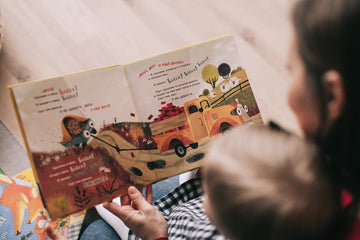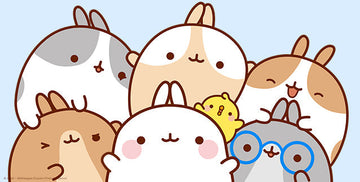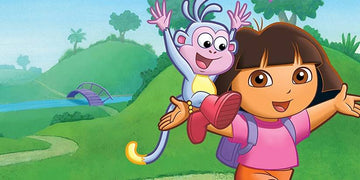Classic children's books are often cherished for their charming stories and vibrant illustrations. Yet, many of these beloved tales contain deeper messages that resonate with both young readers and adults alike. Exploring these hidden meanings can reveal important life lessons and insights that contribute to the richness of these literary works.
Authors often weave in themes that reflect social values, moral lessons, or critiques of society, making their stories more than simple entertainment. As readers engage with these narratives, they may discover layers of meaning that provoke thought and inspire a new perspective on familiar tales. Through this exploration, one can appreciate how these timeless stories continue to shape the way children perceive the world around them.
1) The Anti-Consumerism Message in 'How the Grinch Stole Christmas!' by Dr. Seuss
In "How the Grinch Stole Christmas!", Dr. Seuss conveys a strong anti-consumerism message. The Grinch believes that stealing Christmas means taking away gifts and decorations. He thinks these items represent the holiday’s true spirit.
However, the Whos in Whoville show him otherwise. On Christmas morning, they celebrate joyfully without their material possessions. Their happiness comes from togetherness and community, not from gifts.
This story encourages readers to reflect on what really matters during the holiday season. It suggests that the spirit of Christmas lies beyond consumer goods. For more on this theme, see the discussion at Geeks Under Grace.
2) Economic Allegory in 'The Wonderful Wizard of Oz' by L. Frank Baum
Many people believe that "The Wonderful Wizard of Oz" reflects economic issues of its time. L. Frank Baum wrote this story during the late 19th century, a period marked by financial struggles and debates over the gold and silver standard.
Characters in the story symbolize various social and economic groups. For example, the Scarecrow represents farmers who sought fair treatment and better economic conditions. The Tin Man stands for industrial workers craving a fair wage and the heart of compassion.
These characters and their journeys highlight struggles with wealth and power. They reveal themes of greed, inequality, and the hope for a brighter future in an unequal society. This economic allegory makes the story resonate with readers even today.
3) Consequences of Gluttony in 'Charlie and the Chocolate Factory' by Roald Dahl
In "Charlie and the Chocolate Factory," Roald Dahl explores the theme of gluttony through several characters. Augustus Gloop is the main example. His endless eating habits lead him to fall into the chocolate river.
As he indulges, Augustus ignores the rules of the factory. This causes him to be sucked up a pipe, resulting in a lesson about the dangers of greed. His fate shows that gluttony can have serious consequences.
Other characters also face issues due to their excessive desires. Violet Beauregarde, who chews gum constantly, turns into a giant blueberry. This transformation highlights how gluttonous behavior can lead to unexpected and undesirable outcomes.
4) Empathy and Individuality in 'Horton Hears a Who!' by Dr. Seuss
In "Horton Hears a Who!", Dr. Seuss explores the themes of empathy and individuality through the character of Horton the Elephant. He hears the voices of the tiny Whos and believes in their existence despite their small size.
Horton famously states, “A person’s a person, no matter how small.” This line highlights the importance of valuing every individual, regardless of their size or status. The story encourages readers to listen to and respect others.
The Whos represent marginalized voices in society. By advocating for them, Horton shows that kindness and understanding can make a difference. Empathy is a central message, teaching readers to appreciate uniqueness and support those who might be overlooked.
5) Infant Care Critique in 'Peter Pan' by J.M. Barrie
In "Peter Pan," J.M. Barrie presents a unique view on infant care. The character of Wendy embodies traditional motherly roles, showcasing nurturing instincts.
However, her journey to Neverland highlights the tension between child-rearing and the desire for freedom. Peter Pan's refusal to grow up contrasts sharply with Wendy's readiness to care for others.
This narrative suggests a critique of adult responsibilities, implying that genuine care can stifle personal growth. The story encourages readers to consider the balance between nurturing others and maintaining one's own identity. Through these themes, Barrie's work invites reflection on the complexities of child care and personal desires.
6) Resistance and Rebellion in 'Alice's Adventures in Wonderland' by Lewis Carroll
In "Alice's Adventures in Wonderland," Alice often challenges the authority of the characters she meets. This shows her resistance against the nonsensical rules that govern Wonderland.
Her refusal to conform reflects a spirit of rebellion. When faced with absurdity, she questions the logic of the Mad Hatter and the Queen of Hearts.
Alice's journey highlights her growth in self-confidence. As she navigates through chaotic situations, she learns to assert her own identity. This message of standing up to authority resonates with readers of all ages.
Through Alice's experiences, Lewis Carroll explores the importance of questioning societal norms. This theme invites readers to think critically about their own worlds.
7) Facing Fears in 'Where the Wild Things Are' by Maurice Sendak
In "Where the Wild Things Are," Maurice Sendak explores the theme of facing fears through the character Max. He embarks on a journey to an imaginary land filled with wild creatures.
Max initially feels powerful as he faces the Wild Things. This power helps him confront his emotions, including anger and frustration.
As he interacts with the Wild Things, Max learns to understand his fears better. This journey reflects the universal experience of children managing their emotions.
Ultimately, Max's return home signifies acceptance. He realizes that facing fears is a vital part of growing up.
8) Acceptance of Death in 'Charlotte's Web' by E.B. White
In "Charlotte's Web," E.B. White explores the theme of death through the friendship between Wilbur the pig and Charlotte the spider. Charlotte's efforts to save Wilbur highlight the importance of life and friendship.
As Charlotte faces her own death, the story teaches young readers about the natural cycle of life. Death is not painted as something to fear, but as a necessary part of existence.
Wilbur's growth reflects this acceptance. He learns to cherish the moments spent with Charlotte, understanding that her influence continues even after she's gone.
This gentle portrayal helps children grasp the concept of loss while celebrating the beauty of life and memories.
9) Class Struggle in 'The Secret Garden' by Frances Hodgson Burnett
In "The Secret Garden," class struggle is evident through the characters' interactions. Mary Lennox, initially a privileged girl, learns humility and empathy. Her transformation reflects the divide between the upper class and those who serve them.
Colin Craven, born into wealth, represents the isolation often felt by the upper class. His illness keeps him away from the world, showing how privilege can lead to loneliness. The friendship with Dickon, a working-class boy, bridges this gap.
As the garden flourishes, so do the characters. The secret space symbolizes a place where class distinctions fade. Nature helps unite them, highlighting the shared humanity beyond social status.
10) Environmental Concerns in 'The Lorax' by Dr. Seuss
In "The Lorax," Dr. Seuss highlights important environmental issues. The story shows the consequences of greed and deforestation. The character of the Once-ler illustrates how industrialization can harm nature.
The Lorax serves as a guardian of the trees and speaks for them. He warns about pollution and the loss of natural resources. This message is critical as society faces growing environmental challenges today.
Published in 1971, the book remains relevant. It encourages readers to reflect on their impact on the environment. The lessons from "The Lorax" inspire action toward environmental stewardship.





